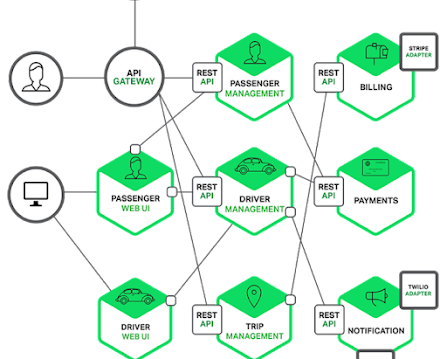Since a lot of you asked for covering Microservices in depth, I have started writing more and more Microservices article and tutorials. So far, we have covered Database Per Microservices, CQRS, Event Sourcing, and Circuit-breaker pattern and CQRS Pattern, if you haven't read them yet, you can also read them.
10 Things you should know before using Microservices
Here are 10 things or reasons you should know before you decide to jump into Microservices architecture for your next project.
Microservices introduce a higher level of complexity due to the distributed nature of the architecture. Deploying, monitoring, and managing numerous services can be challenging, especially for smaller development teams lacking the necessary expertise.
2. Increased Development Effort
2. Increased Development Effort
Building a microservices-based system often requires additional effort and resources compared to traditional monolithic architectures. Each service must be developed, tested, and deployed independently, leading to increased development time and potential synchronization issues.
3. Operational Challenges
3. Operational Challenges
Microservices demand robust operational practices and infrastructure. Proper service discovery, load balancing, fault tolerance, and monitoring mechanisms must be in place, which adds complexity to deployment and maintenance processes.
4. Distributed System Complexity
4. Distributed System Complexity
Inter-service communication is critical in microservices architecture, often accomplished through network calls or message queues. This distributed nature brings challenges like handling network latency, ensuring data consistency, and dealing with potential failures in communication.
5. Skillset and Expertise
5. Skillset and Expertise
Adopting microservices requires developers and teams to possess a strong understanding of distributed systems, networking protocols, and infrastructure management. The learning curve can be steep, necessitating additional training or hiring specialized personnel.
6. Testing and Debugging Complexity
6. Testing and Debugging Complexity
Testing and debugging become more intricate in microservices architectures. As services interact with each other, identifying and isolating issues can be challenging, as failures may stem from multiple services or dependencies. This is one of the biggest drawback of Microservices architecture in my opinion.
7. Performance Overhead
7. Performance Overhead
Many people don't know but Microservices incur additional overhead due to network communication and inter-service calls. The latency introduced by these interactions can impact the overall system performance, especially in scenarios with high inter-service dependencies.
8. Deployment and Versioning Complexity
8. Deployment and Versioning Complexity
Managing the deployment and versioning of multiple services can be cumbersome. Coordinating updates across different services without affecting the overall system stability requires careful planning and execution. In the start it may be fine but as your company grows and you scale to 100s of Microservices this one will become a major problem for you.
9. Scalability Challenges
9. Scalability Challenges
While microservices offer scalability benefits, achieving efficient scaling requires fine-grained service decomposition. Determining the appropriate size and boundaries of services can be tricky, leading to scalability issues and potential resource wastage.
10. Increased Operational Overhead
10. Increased Operational Overhead
A microservices architecture often necessitates implementing additional infrastructure components such as service registries, load balancers, and message brokers. The maintenance and management of these components add operational overhead and can increase costs.
That's all about 10 reasons for not using Microservices for every project. Microservices architecture has its merits and can be highly advantageous for specific use cases. However, it's essential to recognize the potential drawbacks and evaluate whether the benefits outweigh the costs for your particular project or organization.
Factors like team expertise, system complexity, and scalability requirements must be carefully considered before embracing microservices. Ultimately, striking a balance between the benefits and challenges is crucial for making an informed decision regarding the suitability of microservices for your specific context.
Other Java Microservices articles and tutorials you may like:
- 15 Microservice Interview Question and Answers
- Top 5 Courses to learn Microservice with Spring Boot
- How to create Microservice with Java and Spring
- 10 Free Courses to learn Spring for Beginners
- 5 Best Courses to learn Spring MVC for Beginners
- 5 Online Courses to learn Core Java for Free
- 5 Essential Skills to Crack Coding Interviews
- 5 Books to learn Microservice in Java
- 10 courses for Programming/Coding Job Interviews
- 5 Free Spring Framework Courses for Java Developers
- 10 Advanced Spring Boot Courses for Java Programmers
- Top 5 Java design patterns courses for experienced Java devs
- 5 Courses to Learn Big Data and Apache Spark
- 10 Best Courses to learn Spring in-depth
- 5 Essential Frameworks Every Java developer should learn
- 10 Free Spring Boot Tutorials and Courses for Java Devs
Thanks for reading this article so far. If you like this article it then please share them with your friends and colleagues. If you have any questions, feedback, or other fee courses to add to this list, please feel free to suggest.
P. S. - If
you want to learn more about Microservice Architecture and solutions
from scratch and looking for free resources then I highly recommend you
to check out my post about 7 free Microservice courses. It contains free Udemy and Coursera and courses to learn Microservice architecture from scratch.

No comments:
Post a Comment